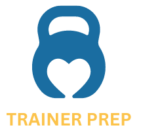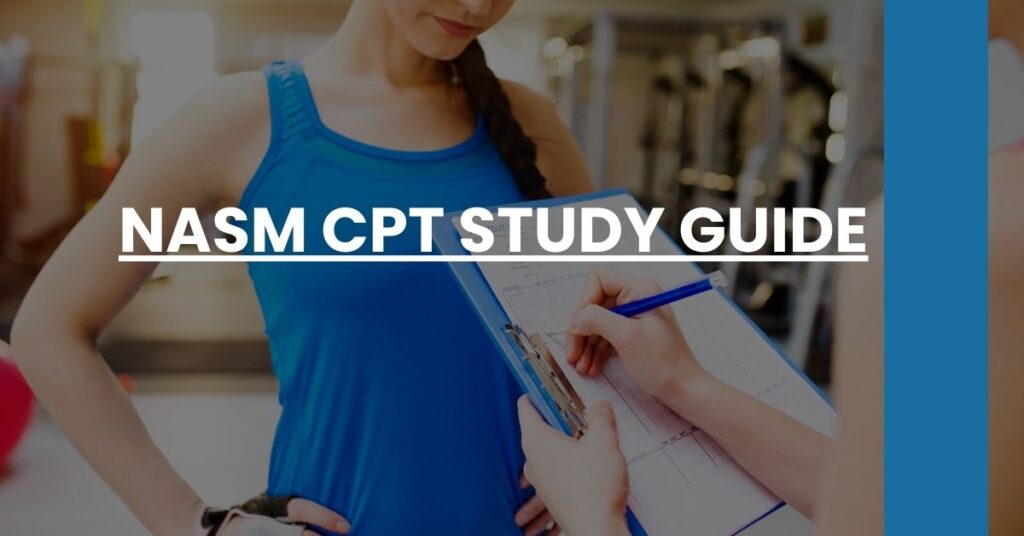Navigating the complexities of NASM CPT certification can feel daunting. I’ve noticed that many aspiring personal trainers share this concern. The NASM CPT Study Guide is a valuable resource, but knowing how to utilize it effectively can significantly improve your preparation experience.
Our team has put together a comprehensive guide to ease your journey, covering:
- The fundamentals of the NASM CPT Study Guide and its importance in the fitness industry.
- Effective strategies to maximize your study efforts.
- Common pitfalls to avoid and essential exam resources.
- Understanding the NASM CPT Certification
- What the NASM CPT Exam Covers
- How to Effectively Use the NASM Study Guide
- Essential Study Tips for NASM CPT Exam Preparation
- Avoiding Common Mistakes When Preparing for NASM CPT
- Utilizing Practice Exams and Mock Tests
- Must-Have Resources for NASM CPT Exam Success
- Creating a Personalized Study Plan
- Staying Motivated and Managing Stress
- Conclusion
Understanding the NASM CPT Certification
The NASM Certified Personal Trainer (CPT) certification is a credential offered by the National Academy of Sports Medicine. It is a top-tier certification that signifies excellence in the personal training domain. Earning this certification can open doors to a vast array of career opportunities in the health and fitness sector.
Why is NASM CPT Certification Important?
The NASM CPT certification is highly regarded for setting the industry standard in personal training education. Employers often look for NASM-certified trainers as this credential ensures that the trainer has a firm grasp of crucial fitness principles and practices.
Key Benefits:
- Enhanced Career Opportunities: Being NASM-certified can make you more attractive to potential employers.
- Comprehensive Knowledge: The certification process covers extensive areas, from exercise science to client interaction.
- Higher Earning Potential: With a certification, you might find that you are in a position to command higher fees or salaries.
The NASM Advantage
NASM’s approach centers on the Optimum Performance Training™ (OPT™) model, a system based on scientific research and evidence-based practices. This model enhances performance, corrects imbalances, and reduces the risk of injury—all critical to personal training success.
In essence, obtaining an NASM CPT certification means you’re learning from a globally recognized leader in fitness education, and that knowledge translates into real-world results for you and your clients.
What the NASM CPT Exam Covers
The NASM CPT Exam is structured to assess your comprehension across several domains of knowledge critical to personal training.
Exam Structure
Here’s a brief overview of the key areas covered:
- Basic and Applied Sciences (15%): Understanding the fundamentals of human anatomy, physiology, biomechanics, and movement science.
- Assessment (15%): Knowledge of conducting fitness assessments and identifying a client’s needs.
- Exercise Technique (20%): Proficiency in demonstrating, observing, and correcting exercise techniques.
- Program Design (20%): Creating tailored fitness programs that meet clients’ unique goals.
- Nutrition (12%): Basics of nutrition and how it impacts fitness and health.
- Client Relations and Behavioral Coaching (10%): Skills in effectively communicating with and motivating clients.
- Professional Development (8%): Ethics, legal practices, and business strategies.
Detailed Breakdown
Basic and Applied Sciences: This area focuses on the interaction between functional anatomy and movement patterns. It’s critical to understand these principles for designing safe and effective exercise programs.
Program Design & Exercise Technique: These domains cover the practical aspects of training. Being proficient here ensures that you can create customized programs and teach exercises efficiently to clients.
Assessment: It’s vital to know various assessment techniques to accurately gauge a client’s fitness level and progress. This section ensures that you can interpret and act on the data you collect.
How to Effectively Use the NASM Study Guide
Using the study guide effectively can make a significant difference in your preparation.
Navigating the Study Guide
The NASM study guide is extensive, covering various domains. Start by familiarizing yourself with the key sections and identify areas where you need more focus.
Strategies for Success
Break it Down: Tackle the study material in smaller, manageable sections. This approach prevents you from feeling overwhelmed by the sheer volume of information.
Use Visual Aids: Incorporate charts, flashcards, and diagrams. Visual aids help in retaining complex information related to anatomy and exercise technique.
Practice, Practice, Practice: Engage with practice questions and mock exams. The more question formats you encounter, the more comfortable you’ll become in interpreting and answering them.
Incorporating Different Learning Methods
Different people learn in various ways. Therefore, it’s crucial to incorporate multiple learning techniques:
- Reading and Highlighting: Go through the study material and highlight crucial information for quick reviews.
- Active Recall: Test yourself regularly on key facts and figures.
- Study Groups: Join or form study groups where you can discuss challenging concepts and teach each other.
Essential Study Tips for NASM CPT Exam Preparation
Effective studying requires a plan and commitment. Here are some strategies that can help you make the most of your preparation time.
Time Management
Set a Study Schedule: Establish a routine that allocates specific times for studying each domain. Consistency is key to retaining information over time.
Prioritize Difficult Topics: Focus more on topics you find challenging. This ensures you spend adequate time understanding tricky concepts.
Utilizing Practice Exams
Taking practice exams offers numerous benefits:
- Identify Weak Areas: They help you pinpoint domains you need to focus on.
- Boost Confidence: Familiarity with exam formats reduces anxiety on the actual exam day.
Staying Organized
Use a Planner: Keep a dedicated planner for your NASM studies. Track what you’ve studied and what’s left to cover.
Organize Study Materials: Keep your notes, textbooks, and digital resources in an organized manner. This makes it easier to access and review information.
Fueling Your Brain
Study sessions can be cognitively demanding. Ensure you’re taking care of your physical and mental well-being by getting plenty of rest, staying hydrated, and eating nutritious meals.
Avoiding Common Mistakes When Preparing for NASM CPT
While preparing for the NASM CPT exam, some common mistakes can derail your progress. Being aware of these pitfalls can help you stay on track.
Over-Reliance on Practice Questions
Balanced Study Approach: While practice questions are beneficial, relying solely on them can be a mistake. Use them as a tool to gauge your understanding, but ensure you also engage fully with the study materials.
Ignoring Weak Areas
It’s easy to focus on strengths, but it’s crucial to face areas where you are less confident. Spend extra time on challenging domains.
Procrastination
Avoid Last-Minute Cramming: Procrastination can lead to cramming, which is not effective for long-term retention. Regular, spaced-out study sessions improve memory retention.
Underutilizing NASM Resources
NASM provides extensive resources. Make sure you’re using all available materials, including textbooks, online courses, and support forums.
By recognizing and steering clear of these common mistakes, you set yourself up for success on exam day.
Utilizing Practice Exams and Mock Tests
The Importance of Practice Exams
Taking practice exams and mock tests is crucial in your preparation journey for the NASM CPT certification. These practice tools simulate the actual exam environment, helping you get accustomed to the type and format of questions you’ll encounter.
Why They Matter:
- Assess Readiness: Practice exams highlight your strengths and reveal areas where you need improvement.
- Reduce Anxiety: Familiarity with the exam format reduces stress and builds confidence.
- Time Management: Simulated tests help you manage your time effectively during the actual exam.
How to Use Practice Exams Effectively
To get the most out of practice exams, follow a structured approach:
- Start Early: Integrate practice exams into your study plan from the beginning.
- Simulate the Exam Environment: Take the exams in a quiet, distraction-free environment to mirror actual test conditions.
- Review Your Answers: After each test, carefully review all answers, especially the incorrect ones, to understand your mistakes.
Consistent Practice
Consistency is key to effectively using practice exams. Regularly taking these exams solidifies your knowledge and enhances recall.
- Regular Testing: Schedule practice tests at regular intervals. This helps consolidate learning and improves your exam performance.
- Track Your Progress: Keep a log of your practice exam scores to monitor your improvements over time.
Must-Have Resources for NASM CPT Exam Success
Having the right resources can significantly impact your preparation for the NASM CPT exam. From textbooks to online tools, these resources provide the foundational knowledge and practice necessary for success.
Essential Reading Materials
A strong foundation starts with the right books and guides. The NASM Essentials of Personal Fitness Training (7th Edition) is a must-have resource.
- Key Textbook: “NASM Essentials of Personal Fitness Training” offers detailed insights into all exam domains, ensuring a well-rounded understanding.
- Study Guides: Utilize the NASM study guide to complement your textbook learning, offering summaries, key points, and practice questions.
Digital Resources and Apps
Incorporate technology into your study routine with these digital tools:
- NASM EDGE App: This app provides access to a plethora of study resources, including practice questions and video tutorials.
- Flashcard Apps: Apps like Quizlet can help reinforce your learning with custom flashcards focusing on key NASM concepts.
Join Study Groups
Study groups offer a collaborative learning environment where you can share knowledge and insights with peers.
- Supportive Community: Join NASM-specific forums or local study groups to interact with fellow test-takers.
- Shared Resources: Benefit from shared notes, study materials, and collective problem-solving.
Creating a Personalized Study Plan
A tailored study plan maximizes your preparation by aligning with your unique schedule, strengths, and weaknesses. Here’s how to create a plan that works for you.
Assess Your Current Knowledge
Start by evaluating your current understanding of each domain.
- Diagnostic Test: Take a preliminary practice test to identify your strong and weak areas.
- Self-Assessment: Be honest about which topics you find challenging and which you easily understand.
Structuring Your Study Plan
Organize your study plan to cover all exam domains thoroughly.
- Set Goals: Break down your study goals by week, ensuring each domain receives ample focus.
- Schedule Study Sessions: Dedicate specific times each day or week to studying, and stick to this schedule.
- Incorporate Review Periods: Set periodic review sessions to revisit previously covered material.
Adapting as Necessary
Your study plan should be flexible to accommodate any changes needed as you progress.
- Monitor Progress: Regularly assess your understanding through practice exams and adjust your plan accordingly.
- Stay Flexible: Be willing to modify your study sessions based on your evolving strengths and weaknesses.
Staying Motivated and Managing Stress
Maintaining motivation and managing stress are critical to successful exam preparation. Here are strategies to help you stay on track.
Techniques to Stay Motivated
Set Achievable Goals: Establish small, measurable milestones leading up to the exam day. This keeps you motivated by creating a sense of accomplishment.
Reward Yourself: Give yourself small rewards after achieving your study goals. This positive reinforcement can boost your morale.
Visualize Success: Visualize yourself passing the exam and achieving your career goals. This can strengthen your resolve to keep pushing forward.
Managing Stress
Regular Exercise: Incorporate physical activity into your routine to reduce stress and boost mental clarity.
Mindfulness Practices: Techniques like meditation, yoga, and deep breathing exercises can help keep stress levels in check.
Healthy Lifestyle: Ensure you’re getting adequate sleep, maintaining a balanced diet, and taking breaks to unwind.
Conclusion
Success in the NASM CPT exam requires a blend of strategic planning, consistent studying, and effective resource utilization. Implement these tips and maintain a balanced lifestyle to maximize your exam potential. For more information, check out the detailed exam timeline.
Keep pushing forward with confidence, leveraging the power of practice exams, personalized study plans, and supportive resources. Your NASM CPT certification is within reach—approach it with dedication and optimism.

